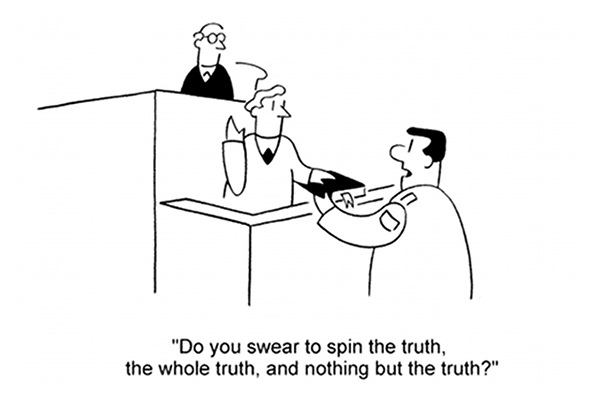By Sajeeb Sarker
Spin
Media School October 21, 2020

Spin often involves manipulation of truth. Image source: samsoto224.wordpress
Spin is referred to mean to manipulate the public by overt deceit. A more recent explanation of spin has been 'polishing of the truth' (Safire, 1996).
The Cambridge Dictionary defines spin as 'a particular way of representing an event or situation to the public so that it will be understood in a way that you want it to be understood'.
In the context of public relations, marketing and journalism, spin is the selective assembly of facts to produce or support a desired view of a story.
To be specific, in public relations (and also in politics) the term spin is a form of propaganda that is usually accomplished by deliberately providing a biased interpretation of an event or campaigning to influence public opinion about an entity (e.g. an organization, or a person). So, it becomes obvious that spin often uses dishonest, deceptive, and manipulative strategies (Safire, 1996).
In the present day, the term spin is used to explain the practice of providing a certain interpretation of information meant to sway public opinion in a desired way. An example of spin will be if a company portrays its appearance in a slightly different direction than it actually is.
In public relations, spin is seen as a derogatory term as this involves dishonest practices to deceit and manipulate.
Useful Readings
Ewen, Stuart (1996). PR! A Social History of Spin. Basic Books. ISBN-10: 0465061796, ISBN-13: 978-0465061792.
Safire, William. 'The Spinner Spun'. New York Times, December 22, 1996.
Street, John (2011). Mass media, politics and democracy. Basingstoke: Palgrave Macmillan. ISBN 9781137015556.


